It started with speakers.
The year was 1998, and the technology made sense for a small group of engineers in Montreal, who designed an especially powerful speaker in an era when brick-and-mortar consumer electronics retail stores enjoyed great success. It was the height of physical media—before Amazon, Apple, Google, Facebook, and Netflix transformed the home-entertainment landscape. Those engineers formed a company around their speakers, D-BOX, and found retailers like Costco and France’s FNAC to carry their product.
“We were making subwoofers for these big-box stores; people began coming to our offices asking for two, three, four of them,” remembers Philippe Roy, co-founder of D-BOX Technologies. “We asked them, what are you doing with so many subwoofers?”
Unbeknownst to Claude Mc Master, president and CEO of D-BOX, their speaker product had gained a cult following among consumers. People were buying multiple subwoofers and placing them around their seats to create a makeshift motion effect when watching movies at home. It didn’t take long for the founders to realize they had stumbled upon a potentially revolutionary new technology.
“We’re all a bunch of engineers who like to develop new products and, as you know, the speaker industry is really competitive. We looked at the business and decided to go all-in on motion, a product that nobody had at the time. We knew that if we could come up with something great, we could revolutionize the entertainment market.”
Little did they know the challenge that awaited them.
The first generation of D-BOX motion seating systems was inaugurated in 2001. Maintaining its roots as an audio company, D-BOX directly synched its motion technology to any given soundtrack to produce a uniquely kinetic experience. At the time, the company was targeting the home-entertainment market—coinciding with the explosion of DVD players around the world—and was looking at commercial applications, such government and corporate-training simulators and amusement parks. A private chair, however, can cost thousands of dollars—making it more of a luxury good for the high-end home-entertainment market. With a limited marketing budget to build consumer awareness, D-BOX began looking at the theatrical-exhibition market as a catalyst for word-of-mouth buzz.
“It’s really expensive to create word of mouth with a new product in any industry, especially when you want to cover the globe. Cinema is the best way to create word of mouth,” says Mc Master. “We saw the theatrical market as the best way for people to enjoy the D-BOX experience without having to pay too much.”
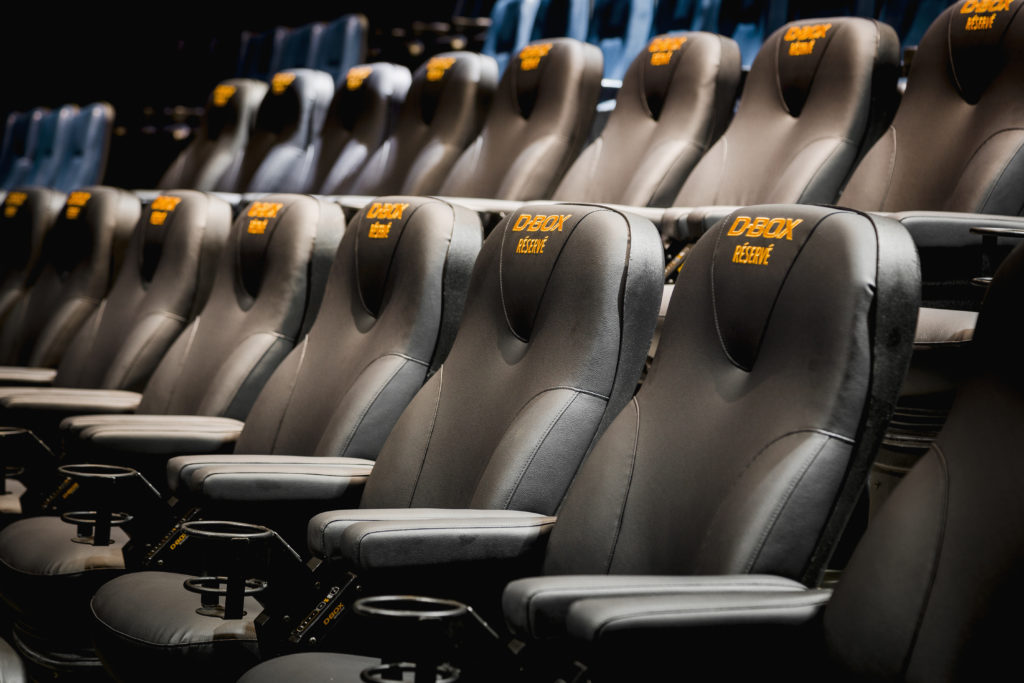
With their sights set on the cinema market, D-BOX encountered a particularly difficult problem: selling studios and exhibitors on a new technology—just as the industry was transitioning to digital projection.
“It was a chicken-or-the-egg situation,” says Philippe Roy. “Exhibitors weren’t sure if we would have enough content throughout the year; studios weren’t sure if we could get a big enough footprint, or if people would be ready to spend the extra money for the experience.”
While ticket premiums are commonplace today, it was rare to find them at the dawn of digital cinema. D-BOX wasn’t only selling the cinema industry on motion seating; they were evangelizing the potential of premium pricing.
“It was the most difficult clause to negotiate with exhibitors,” says Mc Master, referring to the $8 surcharge D-BOX was asking per admission. Part of their pitch actually addresses a challenge exhibition is still trying to address today—finding a way to charge more for the best seats in an auditorium. By offering movie theaters the flexibility of installing a few rows if they’d rather not fully equip an auditorium, D-BOX gave cinemas a tangible premium aligned with premium seats. “We used the airline model as an example: In any given airplane, you can pay to sit in economy or pay more to sit in business or first class. It’s the same venue, but there’s a different experience tied to the more expensive seat.”
Mc Master remembers the difficulty in booking meetings with studios when first starting out—a group of engineers without industry connections, cold-calling from an industrial park in Montreal. “We were outsiders in every way imaginable,” he says. When he did manage to book meetings, he would have to ship a D-BOX chair to a friend’s house in Los Angeles for the demo. When one of those meetings was canceled—sometimes with little to no notice—he would have to arrange to ship it back while it was still en route to California.
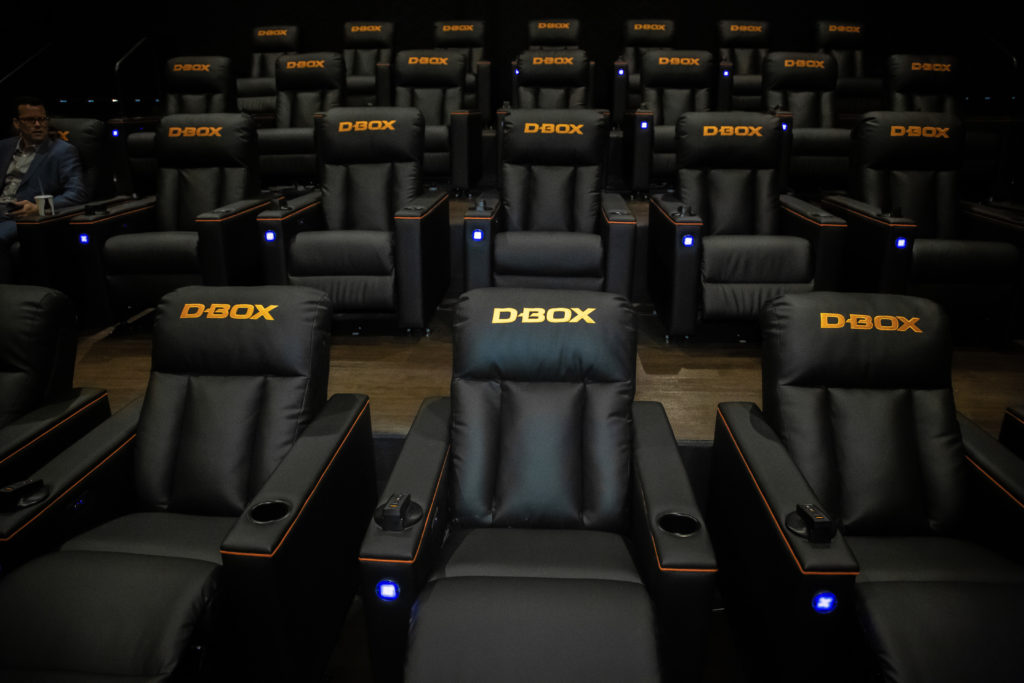
Every veteran D-BOX executive interviewed for this story agreed that the turning point came in 2009, when they received the green light from Nikki Rocco, president of distribution at Universal, to code Fast & Furious using their motion technology. “She took the risk and gave us a chance,” says Mc Master.
The celebration in Montreal wasn’t prolonged. The D-BOX team now had to code the entire film using their motion technology—and find theaters willing to install their seats in time for the film’s release. The sales team was able to land two screens: one at the iconic Mann Chinese Theatre in Hollywood, the other at a cinema in the retirement community of Surprise, Arizona. “We didn’t know what to expect,” confesses VP of sales Yannick Gemme, who joined the company in 2005. “It was only two screens, and one of them was in a place with an older demographic—I wasn’t sure if it was going to work; we always expected our core audience to be much younger.”
The audience in Surprise, Arizona, embraced the motion seats, emphasizing the technology’s potential among a wide range of moviegoers. “We had sold-out shows for weeks, even with the $8 premium, and lots of people took notice,” remembers Philippe Roy. “That’s when I realized we had something in our hands that could get much, much bigger.”
Over in Hollywood, the D-BOX team reserved motion seats at the Chinese Theater for studio executives on opening night of Fast & Furious. Mc Master sat through the film, nervously anticipating their reaction to the new technology. At the end of the film, he recounts, a distribution executive from a major studio shook his hand and told him, “This is the next big thing for the industry.”
If Fast & Furious served as the ultimate proof of concept for both exhibitors and distributors, the D-BOX sales team now had to go out and expand its footprint among other studios and theater chains. Mc Master’s favorite demo, a clip of a train journey from the Robert Zemeckis film The Polar Express, was used to emphasize how motion seating could become part of the moviegoing experience—not just a gimmick. “We work hard to make sure people understand that we’re not offering a distraction—we’re not a theme park ride—we’re part of the complete experience, in conjunction with the sound and the image,” he says. “We don’t want audiences to be distracted by the motion.”
The first major circuit to sign up had a special connection to the Montreal-based company. Cineplex, the leading exhibition chain in Canada, opened its first D-BOX location in July 2009. “Cineplex is a proudly Canadian company, so it makes perfect sense for us to support and partner with other Canadian companies that share our passion for innovation,” says Cineplex president and CEO, Ellis Jacob. “D-BOX is known not just in Canada but around the world for its technology, and over the past decade its motion seats have been a much sought-after experience that our guests have loved.”
That global expansion was kick-started with the support of Cinemark, which partnered with the company to install seats throughout its circuit in Latin America. Today, D-BOX is a global brand with over 700 screens in 40 countries worldwide.
At the beginning of the decade, however, expanding that footprint was no small feat. At the time, the industry was still managing the challenge of transitioning from celluloid to digital projection—a global effort that required great investment from both studios and exhibitors. Moreover, motion seating was far from being the hot premium on the market at the beginning of the decade. That accolade went to digital 3-D, especially after the record-breaking run of James Cameron’s Avatar at the box office. Exhibitors would soon begin allocating capex to other upgrades, such as recliner seating and expanded concessions. Slowly but surely, however, motion seating began making inroads built on positive consumer reaction and a consistent stream of titles from studio partners.
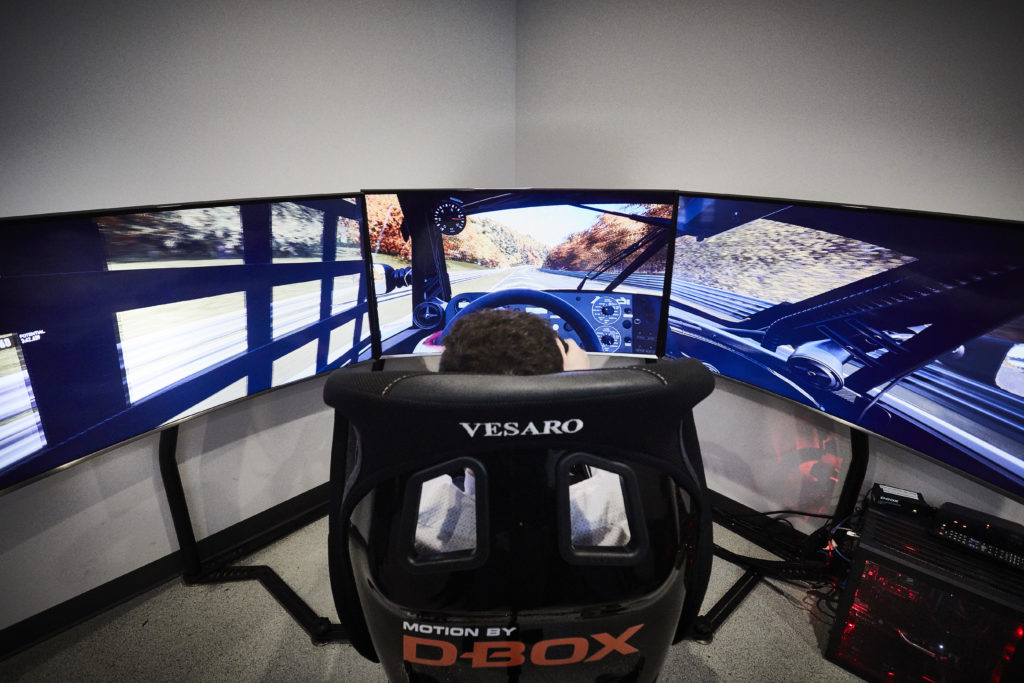
This success is a reflection of the company’s commitment to ensuring each D-BOX title goes through an intricate, rigorous motion-coding production ahead of release. Most of the company’s efforts are done on-site in its Montreal office: from engineering to integrating the motion technology into seats to the motion coding synchronized to a film’s soundtrack. D-BOX coders, who are hired based on an academic and professional background in music or audio production, sit in motion-enhanced work stations as they link specific sounds and actions to an extensive library of individual motion effects. The combination is akin to an orchestral arrangement: a series of unique notes coming together to create a harmonious whole. The work is painstakingly detailed, with coders dedicating hours—if not days or weeks—to individual scenes.
Mc Master learned the importance of having fully optimized content as he witnessed the rise—and dip—of digital 3-D technology. “It was all about 3-D when we first entered the market,” he says. “But if the audience doesn’t see the value in the experience, they don’t come back. That’s why the quality of the motion track is the most important part of our business.”
D-BOX’s motion system has been recognized by major corporations outside the entertainment industry, used in commercial simulation settings by NASA, Caterpillar, John Deere, and professional Formula One pilots. The company has a high-end private client business, which sells seats and codes movies for the home-entertainment side of the business. D-BOX is also active in the video game market and amusement-attractions market, ideally poised to expand to cinemas as they begin exploring esports programming.
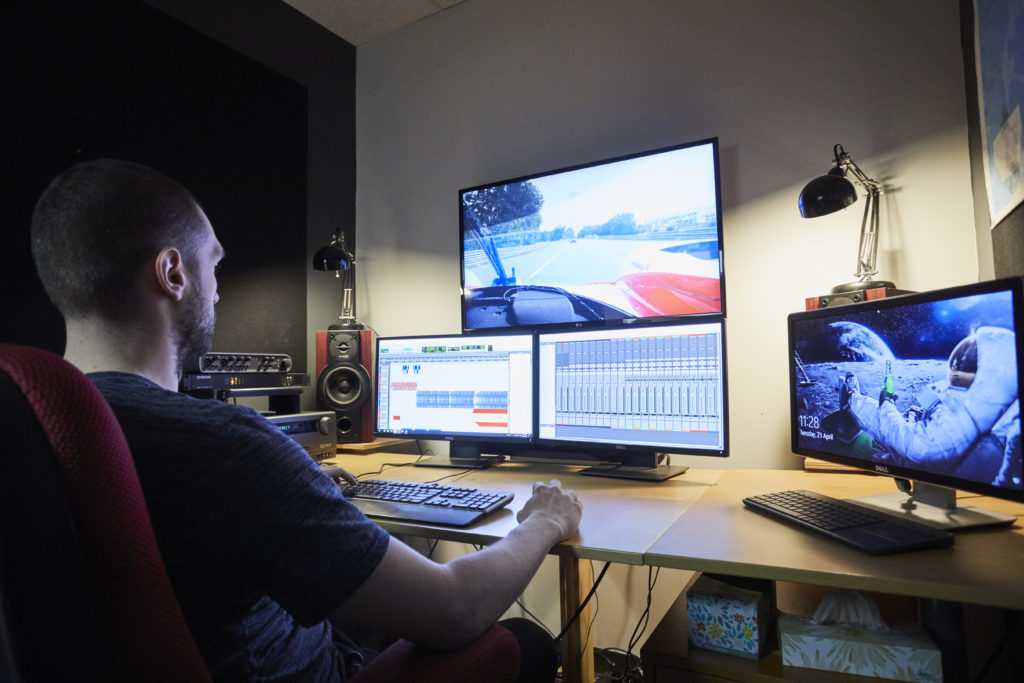
As the company’s cinema business has grown over the last decade, so has its competition. Motion seating has become one of the hottest trends in exhibition today, with competing technologies vying for business around the world. “For the first few years, content was always a challenge. It’s not so much a challenge for the domestic business anymore, but there’s still work to be done overseas,” says sales VP Gemme. “We’re in countries like Japan, we just signed a deal with PVR in India; these are places where local content is huge.”
While embracing local content in foreign markets is the next frontier for D-BOX, it is also facing a new period in its expansion: brand awareness. With a growing list of competing technologies in the space, D-BOX has been careful in crafting a unique marketing message—in conjunction with studios and exhibitors—to differentiate its motion seating system from the rest. If D-BOX’s first decade in the cinema market was about establishing a concept, its next decade will be about establishing its brand.
Mc Master is confident his company is up for the challenge. The D-BOX chief executive cites innovators like Amazon and Cirque de Soleil as the blueprint for success. “When you launch something that addresses an existing market—and redefine it by giving people a new way to experience it, it’s usually successful,” he says. “D-BOX is trying to redefine the way you experience entertainment—whether it’s movies, video games, or virtual reality—through motion.”
“I’m sure motion will be here forever now. I think we’re at a time in film history with motion seating comparable to sound in the 1920s. A lot of people misunderstood when sound came to the cinema—they said it didn’t add any value to the experience. It’s an exciting time to be working at D-BOX; you don’t often have the opportunity to establish a new standard, to redefine an industry.”

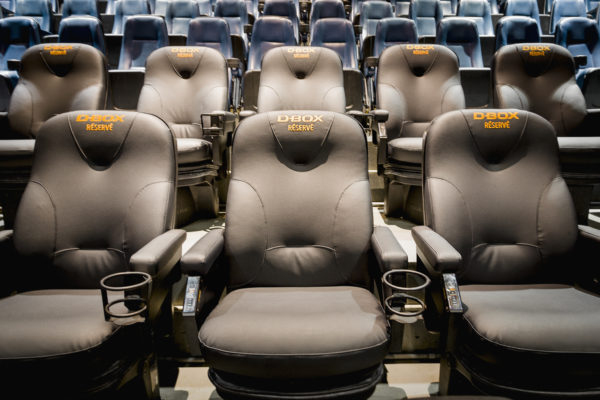

Share this post